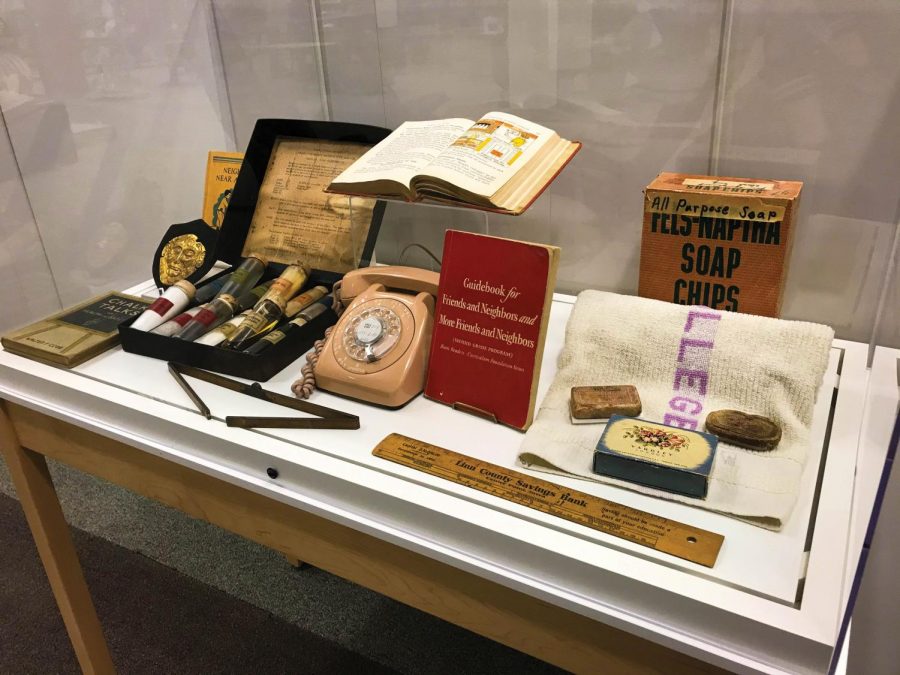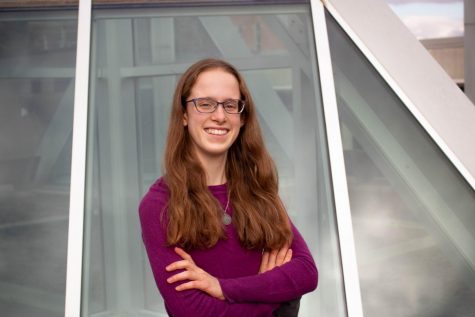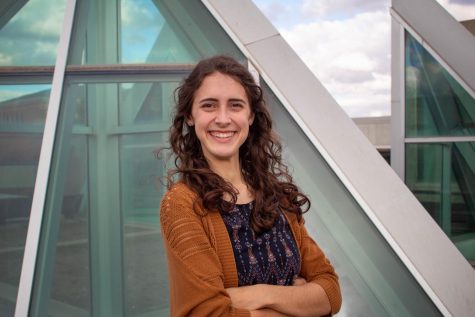Bringing pandemics to life across all generations
Rod Library is holding an exhibit showcasing the 1918 influenza pandemic. The exhibit will run until Friday, November 20.
Nov 12, 2020
It was the comparison that everyone was making as the COVID-19 pandemic began to sweep the world in the spring of this year:
This has happened before.
In 1918, an influenza pandemic killed more than 50 million people worldwide. Just over a century later, the COVID-19 pandemic is following a similar pattern, and modern historians and journalists have been examining the parallels between the pandemics.
Among them were Rod Library Archivist Jaycie Vos and her colleagues, including Archival Processor & Reference Associate Tessa Wakefield, who wanted to uncover how the 1918 pandemic affected daily life at UNI, then known as Iowa State Teachers College.
With their co-workers in the library’s Special Collections and University Archives department, they combed through donated scrapbooks, diaries, letters and articles from the college newspaper at the time, “The College Eye,” to piece together the story.
“(The materials) show a variety of perspectives,” Vos said. “Some things were really similar.”
For example, classes continued as normal during the height of the pandemic in October 1918, although other non-essential activities were cancelled, just as UNI continued to hold classes—albeit virtually—during the lockdown period this spring.
However, other responses to the 1918 pandemic were startling for Vos, such as the College Eye’s practice of openly reporting the names of those who had recently contracted the flu.
“Here’s a relevant example—it’s an article that is essentially a roster of students hospitalized with the flu, which would never happen today!” she wrote in an email.
Highlights of Vos and her colleagues’ work are currently on display in Rod Library, just outside the Learning Commons. The display case, which features diaries, photographs and copies of “College Eye” articles, is actually just one part of a multi-department exhibit, “Pandemics in the History of Northern Iowans.” Several other Rod Library departments, from the UNI Museum & Center for the History of Rural Iowa Education and Culture to the library’s Fine and Performing Arts Collection, have contributed.
According to Julie Ann Beddow, Library Assistant in the Fine and Performing Arts Collection, she and her department regularly select new artwork to adorn the wall along the Learning Commons. Over the last six years, the department has featured more than 45 exhibits there.
This fall, Beddow and her team wanted to install some “funky art” related to COVID-19, to catch people’s attention and hopefully offer a little levity. Their exhibit features student-selected images from a United Nations archive developed in March 2020. In that archive, the UN called on the world’s creative community to create engaging fact-based content around six COVID-related themes: “personal hygiene,” “physical distancing,” “know the symptoms,” “kindness contagion,” “myth-busting” and “do more, donate.”
“All of the artwork that is on the wall are selections of over 4,500 pieces of artwork sent to the United Nations back in March,” Beddow said.
After developing the wall, Beddow and her team felt there was more of a story to be told. They realized this was a perfect opportunity to collaborate with their fellow Rod Library specialists.
“I could’ve put the art up and it would’ve been modern 21st-century art, but the story needed to be bigger,” Beddow said. “I felt like with Special Collections and the Museum, there was the beef. That’s the full entree.”
The final result? A multi-part exhibit featuring not only the Fine and Performing Arts Collection wall and the Special Collections artifact display case, but also a display curated by the UNI Museum, under the direction of Director and Chief Curator Nathan Arndt.
“It was a total collaboration between these three departments,” Beddow said. “I couldn’t have done this without more creative brains.”
The UNI Museum’s display case, directly underneath the Fine and Performing Arts wall, holds artifacts which also connect to the six UN themes. For example, an old landline telephone reminds viewers to spread kindness by calling friends and family, and old-fashioned bars of soap connect to the theme of personal hygiene.
It’s clear that the inter-departmental exhibit not only looks to the past, but also considers the present— and Vos and her colleagues are even thinking ahead to the future by spearheading an ongoing COVID-19 community archiving project.
Through a Google Form, available at https://docs.google.com/forms/d/e/1FAIpQLSeutAxR8_MMP9tjJIHRnC3KF2vuYXiR9w0RBiNWKe_YVR2m4Q/viewform, anyone may submit stories, reflections, links, photographs, videos, and other files that capture their experience relating to COVID-19. Citizens may also arrange to submit physical materials by contacting libarchives@uni.edu.
“We’ve been getting a lot of photos of “Closed” signs (and) socially distanced parties,” Vos said with a laugh. “We’re just trying to get information from students on what is their experience now like.”
“We’re trying to help make historical information relevant to today, to connect with today’s lived experiences,” she added. “When we reconstruct historical narratives through documents… history can be really relevant.”
For more information on the exhibit, visit https://library.uni.edu/events/2020-10/pandemics-history-northern-iowans










